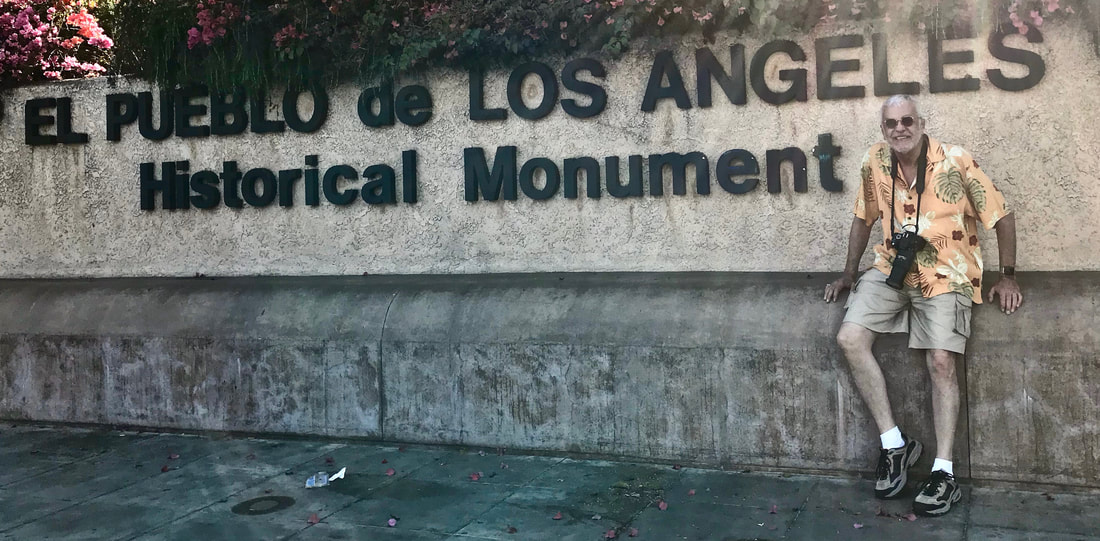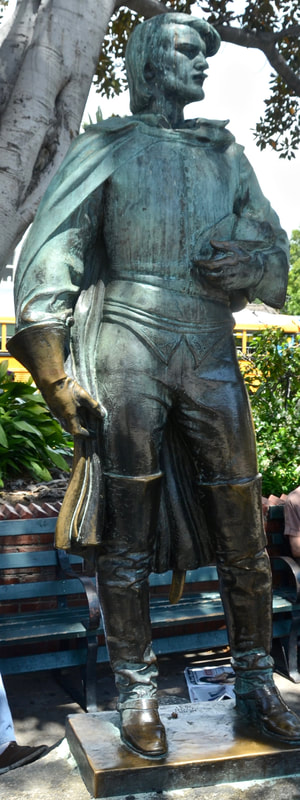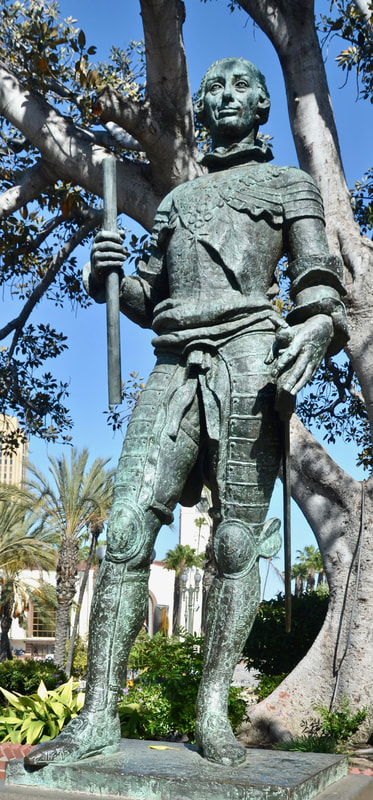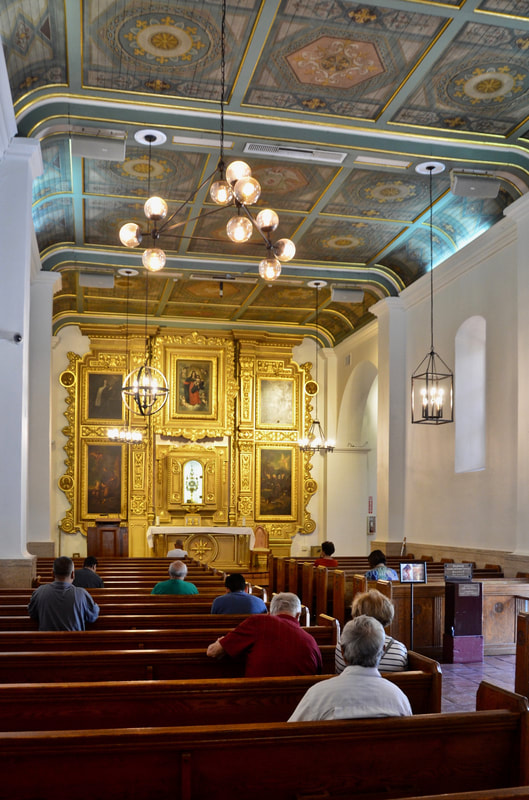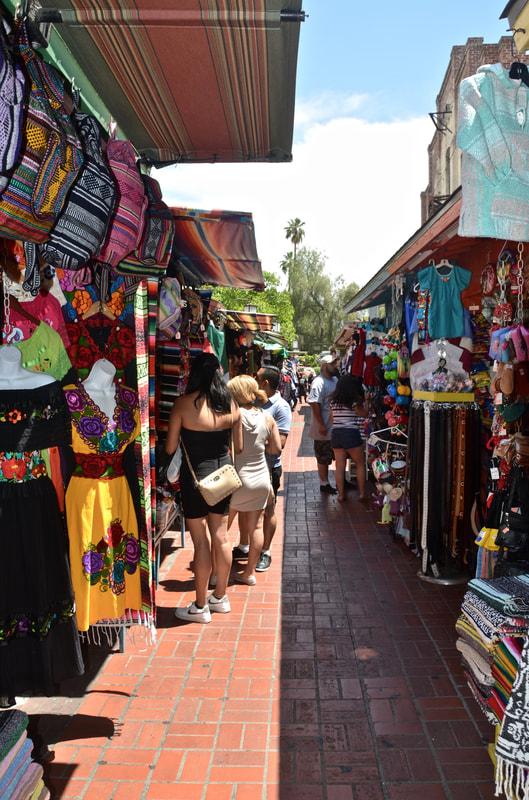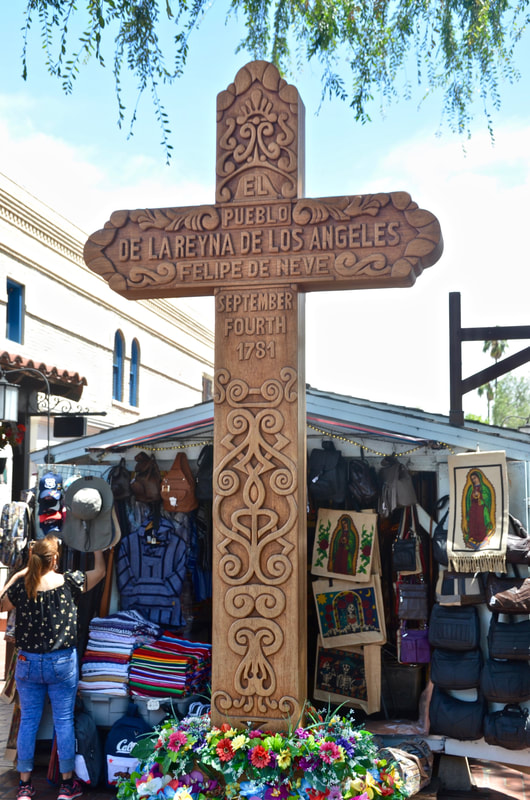98. Hispanics had to be imported for
El Pueblo de la Reina de Los Ángeles
|
By Miguel Pérez
Back in 1781, when king Carlos III of Spain ordered the creation of a new California town, the Spanish Governor of Las Californias, Felipe de Neve, decided that it would be named "El Pueblo de la Reina de los Ángeles." Neve selected a site near the Porciuncula (Los Ángeles) River and laid out the town streets. In typical Spanish style, the layout consisted of an open central plaza, headed by a Catholic church and surrounded by buildings creating a town square. That square was then surrounded by streets that created a grid of rectangular land plots that were to be used for building homes and for farming. The problem was that there were no people for this town. They had to be imported from Mexico! My, how things have changed! Neve recruited 11 families in Sonora and Sinaloa, Mexico, consisting of 11 men, 11 women and 22 children. He organized their journey and gathering at Mission San Gabriel Arcángel, from where they would begin their final nine-mile march to the site chosen for the new town. Although they were all from the portion of New Spain that is now Mexico, their racial and ethnic composition was remarkably diverse. The 22 adult "pobladores" (settlers) included one Peninsular (Spaniard born in Spain), one Criollo (Spaniard born in New Spain), one Mestizo (mixed Spanish and Indian), two Negros (blacks of full African ancestry), eight Mulattos (mixed Spanish and black), and nine Indios (Native Americans). Yet they are all considered Hispanics, because they came from an area of Mexico that had already undergone a century of cultural assimilation into a Spanish-speaking, racially and ethnically intermixed society. This is true of the earliest Hispanic settlers of the entire state of California, who were almost entirely from Sonora and Sinaloa. Once they gathered at Mission San Gabriel Arcángel, after traveling more than 1,000 miles, the recruited pobladores were joined by four Spanish soldiers and two mission priests to make their last, historic nine-mile march to what is now downtown Los Ángeles. And so, 237 years ago today, on September 4, 1781, those 50 Hispanics of Native American, African and European decent created "The Town of the Queen of the Angels," what in now a city of almost 4 million people. To celebrates its birthday, the City of Los Ángeles hosts an annual recreation of the journey of Los Pobladores, along the same historic route, from the mission to the center of the city, including some of the pobladores' descendants! This year, although the actual birthday is today, September 4, the historic march took place last Saturday, Aug. 25. Starting from Mission San Gabriel, dozens of walkers and bikers took the three-hour trek to El Pueblo Historical Monument, a 44-acre park in downtown Los Ángeles near the site of Los Pobladores’ original settlement. Along the way, for the last mile of their journey, they were joined by the annual Catholic procession from the Cathedral of Our Lady of Angels to Our Lady Queen of Angels Catholic Church, which presides over the plaza of at El Pueblo Historical Monument. Although the original pueblo was built along the Los Ángeles River, to the southeast of the current plaza, the town was relocated to the Monument's current location, farther from the river, after the original pueblo was washed away by a flood in 1815. Today, the Monument (or historic district) stands as the oldest section of the city. It features the city's oldest, historic buildings, surrounding an old Spanish plaza (built in the 1820s), which are now mostly museums and restaurants. The city's oldest surviving residence, Avila Adobe (1818), is here. And so is the city's oldest brick residence, Pelanconi House, (1850), which is now a Mexican Cafe called La Golondrina. It also features the Old Plaza Firehouse, built 1884 and operated until 1897, the oldest firehouse in the city and now a museum. The Monument also includes the famous Olvera Street, a colorful, outdoor Mexican marketplace (created in 1930) that is one of the city's top tourist attractions. Both King Carlos III and Governor Neve are honored with statues in the Monument's central plaza, where a plaque also displays the names of Los Pobladores and yet another statue honors Franciscan mission leader Father Junípero Serra. The entire district was designated as a state monument in 1953. It was listed on the National Register of Historic Places in 1972. The church, Nuestra Señora la Reina de los Ángeles, (Our Lady Queen of Angels), was founded by Franciscan Fray Luis Gil y Taboada on August 18, 1814, when California was still under Spanish rule. It was built using the adobe blocks from the ruins of the original 1784 church (part of an asistencia or sub-mission) that was there to assist the original pobladores. The completed new church was dedicated on December 8, 1822, and again rebuilt, using the original church materials, in 1861. Designated as a California Historical Landmark, the church still offers masses in English and Spanish. And next to the church is La Placita, church grounds that are the site of many outdoor religious and ethnic festivals. This historic district, especially the plaza, was the city's social and commercial center since the town was moved here shortly after the flood of 1815. It was "el centro del pueblo" under Spanish colonization (1781–1821), Mexican rule (1821–1847), U.S. takeover after 1847 and well into the 19th century. It is still the site of many ethnic celebrations, and the heart of the city's Hispanic community! 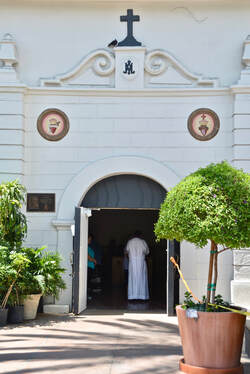
To enlarge images, click on them!
|
En Español:
|
|
Next,
Before we leave El Pueblo de Los Ángeles Historical Monument, we must make a separate stop at one of its major attractions, La Plaza de Cultura y Artes, which is probably the best Mexican-American museum in the country. Stay tuned. |

